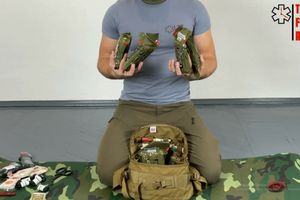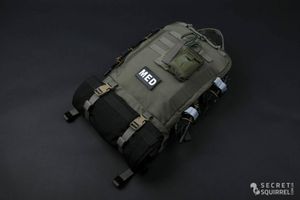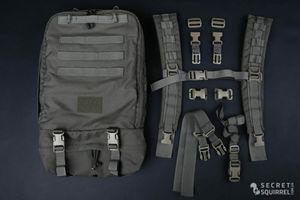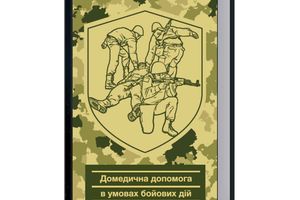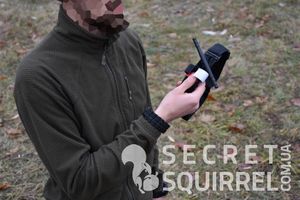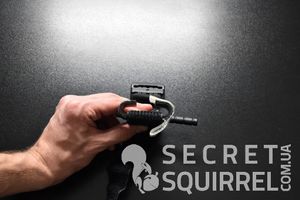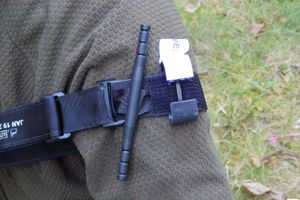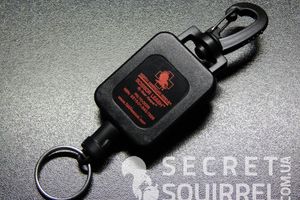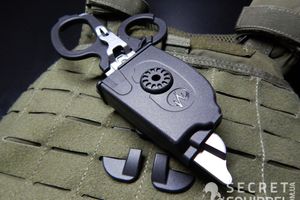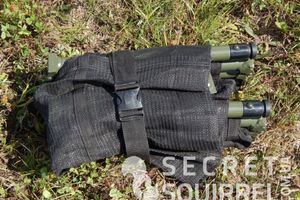North American Rescue (NAR) Combat Application Tourniquet (C-A-T) is a high-performance tourniquet that can stop heavy bleeding in seconds. Such efficiency is achieved by several design features, which we will try to describe in this review.

The manufacturer declares the following features of this device:
- Allows you to quickly stop life-threatening bleeding.
- Successful use with even one hand.
- Designed for use in all weather conditions.
- Dimensions: 17cm. x 6 cm. x 4 cm. (length \ width \ depth when folded). Total length: ~ 95 cm.
- Weight: 77 g.
- Available colors: Black, Blue, Orange.
In addition, a large number of marketing buns are mentioned, such as:
- Proven by the US Army Institute of Surgical Research 100% effective in preventing hemorrhages of the upper and lower extremities.
- Winner of the "10 Great Inventions" US Army Award.
- The official harness of the US Army.
- Used by traditional and special forces.
- Protected by US Patent Nos. 7,842,067 and 7,892,253.
The tourniquet is really used by the military, security forces and rescue personnel not only in the United States, but also far beyond its borders and has gained quite positive fame. So, let's look at it more closely:
Design Features Combat Application Tourniquet

NAR C-A-T consists of a small plastic platform, to which hooks are attached to fix the rod, and a wide bandage with Velcro, inside of which a narrower sling passes through the gate along the entire length. At one end of the NAR Combat Application Tourniquet (C-A-T) there is a platform with hooks, a collar and a plastic buckle through which the free end of the bundle, marked in red, is passed.
The Velcro used on the C-A-T differs from the traditional one in that along the entire length of the bundle, the Velcro contains both “hooks” and “loops”. This allows the harness to securely cling to itself, regardless of side and diameter selected.
The maximum fixation is achieved not only due to Velcro, but also with the help of a two-slit buckle, through which the free end of the bundle is passed. Depending on the selected configuration (one-handed or two-handed, which we will talk about a bit later), it can be either self-locking or non-locking.
Despite the relative complexity of the design, the principle of operation of the tourniquet is quite simple, and resembles the traditional twist used for bleeding. After adjusting the harness in volume and blocking it (with the help of a two-sling buckle and Velcro), an internal sling is activated, the diameter of which decreases as the gate rotates. After tightening the inner sling stops the bleeding, the revolving shaft is fixed with a hook. The hooks are additionally equipped with a small section of white Velcro marked “TIME”, on which you can leave a mark on the time of applying the tourniquet. In addition to the hooks, the revolving shaft can be fixed with the remainder of the length of the harness itself.
This design has several advantages compared to a traditional rubber band:
- It is possible to independently use the device even with one hand, which is very problematic when using a traditional rubber band.
- Rubber is sensitive to cold, while NAR Combat Application Tourniquet (C-A-T) materials allow its effective use even at low temperatures.
- The double-slit buckle reliably blocks the volume of the tow even if the Velcro is damaged or clogged with sand, snow, etc.
- NAR Combat Application Tourniquet (C-A-T) can be applied directly to the skin without underlying material, as the bandage performs its role.
- When using rubber harnesses under them, it is recommended to insert pieces of paper with marks on the time of their application. This method is not very reliable, because paper easily gets wet, tears, gets dirty, etc. A place for the time stamp is provided in C-A-T from the very beginning.
- NAR Combat Application Tourniquet (C-A-T) allows for metered compression both when applying the tourniquet and when it is loosened, which facilitates the transition from the tourniquet to a pressure bandage if necessary.
Preparation for use Combat Application Tourniquet
Combat Application Tourniquet is supplied from the factory in the so-called “one-handed” configuration (see here). If you have already tried using the NAR Combat Application Tourniquet (C-A-T) and want to return it to its original position, simply repeat the steps described below.

- Pass about 6 inches (~ 15 cm) of slings through the buckle slot closest to the platform.

- Glue the working end (marked in red) back to the Velcro.

- Fold the remaining length of the ring with a “ladder” and fix it with Velcro.

- Using Velcro on the working end (marked in red), secure the harness when folded.

- Insert the pivot rod into the hooks. NAR Combat Application Tourniquet (C-A-T) is ready for use in a one-handed configuration.
In this form, the tourniquet can be put in a first-aid kit, or in a special pouch. The photo below shows the C-A-T inside the Condor Flashlight Pouch.

In this article, we familiarized ourselves with the design features of the NAR Combat Application Tourniquet (C-A-T) and prepared it for work. In the next publication, we will learn how to use it to stop bleeding of the upper and lower extremities.
A source: secretsquirrel.com.ua
Author: secretsquirrel.com.ua

























































































































